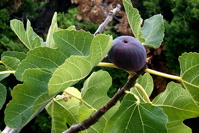Spring Garden Season
It's here, and it's in full swing. The past month has been kind of like that song on the radio, "you're hot and you're cold". We went from some early March days in shirtsleeves to a couple of weeks of cold-n-rainy, then some nice daytimes with back down the mid-40's at night. This weekend it's supposed to get into the mid-80's. My lettuce is CONFUSED, I tell ya.
Things I've been doing, some of which may be things to think about doing in your garden:
Greens, greens, greens!
- Harvest the first crop of spinach, Catalina Baby, (outer leaves only), and hope I didn't take too much
- Plant more spinach, this time a heat-tolerant variety, Oriental Giant (a spinach-alike, really) and a quick to mature type, Nobel 45-day.
- Harvest rainbow chard, cutting it all way back to some inner leaves. No leaf miners (yet?) this year, for which I'm grateful.
- Check on your peas every couple of days-- they may need a boost grabbing onto their trellising. I find myself patiently helping them grab the trellis instead of throttling each other. Hmm, sounds like kids!
- Pick the first few pea stragglers and eat them as snap peas, whether they are conventional or snap peas. Don't let your pea plant produce full-grown seeds and then think it is done for the season.
- Dress their roots with a good layer of compost. In addition to keeping the soil moist, this helps keep it cool. Peas with cool feet will produce longer and be less prone to mildew.
- Now that the weather is getting hotter, make sure that you don't spray the pea vines themselves when watering if you can help it, and when you water, do so with plenty of time to dry out before the heat of the day. Once mildew takes hold, it can spread pretty quick.
- Strawberries are flowering now; have you fertilized them since tucking them in for fall? This is a really good time. If you wait until the first crop of berries is ready, they may need a long break to absorb nutrients before putting out lots of replacement flowers.
- Mine are everbearing, which produce a berry here and there all summer, but if yours are June-bearing, it's doubly important to fertilize as soon as they start greening up and forming flower buds. You're only getting the one shot with the berry crop!
- Before you fertilize, especially if you're using compost, carefully pull out all the winter-killed foliage. You don't want rotting vegetation under that compost-- the crowns need to breathe and get good air circulation. This will help prevent fungus problems.
- Be careful what you are pulling on, and either snip out the old foliage at the stem, or grab only a stem or two at a time and give a quick sharp yank. It's too easy to pull out the crowns!
- If your strawberries are in a container, like mine, check the crowns. The soil levels drop as organic matter is used up, and you may have little strawberry castles raised up 2 or 3 inches above the soil. Fill in with enriched potting soil, or regular potting soil mixed 50% with compost. Be careful not to cover the crowns themselves-- err on the side of caution, because if you cover them, you are very very likely to have fungus or mildew problems.
- Container strawberries are sensitive to minerals, too-- be sure to sprinkle some greensand and bone meal or eggshell into your containers annually. Now is fine, it's not too late at all.
Labels: compost, fertilizing, garden prep, greensand, mybayareagarden, peas, spring, strawberries







